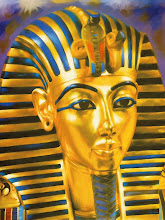Info Geral Acerca do Livro de São Cipriano:
Livro de São Cipriano é um grimório publicado em diversos países, inclusive no Brasil pela Editora Eco, do Rio de Janeiro, que contém diversos rituais de ocultismo, mais especificamente magias (branca e negra), com múltiplas finalidades, inclusive para o quotidiano.
O Livro de São Cipriano hoje é uma verdadeira coleção, todos afirmando que são os verdadeiros livros de São Cipriano, mas, na verdade, São Cipriano só escreveu um: Livro de São Cipriano de Capa Preta. [carece de fontes?]
A lenda de São Cipriano, o feiticeiro, confunde-se com São Cipriano de Cartago, santificado pela Igreja Católica, conhecido como o Papa Africano. Apesar do abismo histórico que os afasta, as lendas combinam-se e os Ciprianos, muitas vezes, tornam-se um só na cultura popular. É comum encontrarmos fatos e características pessoais atribuídas equivocadamente. Além dos mesmos nomes, os mártires coexistiram, mas em regiões distintas.
Cipriano, o feiticeiro, é celebrado no dia 2 de outubro. Foi um homem que dedicou boa parte de sua vida ao estudo das ciências ocultas. Após deparar-se com a jovem Justina, converteu-se ao cristianismo. Martirizado e canonizado, sua popularidade cresceu devido ao famoso Livro de São Cipriano, um compilado de rituais de magia.
O Antigo e Verdadeiro Livro Gigante de São Cipriano
O famoso Livro de São Cipriano foi redigido antes de sua conversão. Uma parte dos manuscritos foi queimada por ele mesmo. A questão é que não se sabe quando, e por quem os registros foram reunidos e traduzidos do hebraico para o latim, e posteriormente levados para diversas partes do mundo. [carece de fontes?]
No decorrer dos anos, o conteúdo sofreu alterações significativas, além da adequação necessária na tradução para os vários idiomas. Esses fatores colocam em dúvida a fidelidade das versões recentes, se comparadas às mais antigas.
Atualmente, não é possível falar do Livro, mas sim dos Livros de São Cipriano. As edições capa preta e capa de aço ou aquelas intituladas como o autêntico, o verdadeiro ou o único, enfatizam um mesmo acervo mágico central, e ainda exaltam o cristianismo e a vitória do bem sobre o mal.[carece de fontes?] Porém, existem grandes diferenças no conteúdo. Enquanto alguns exemplares apresentam histórias e rituais inofensivos, outros apelam para campos negativistas e destrutivos da magia.
Num aspecto geral, encontra-se instruções aos religiosos para tratar de uma moléstia, além de cartomancia, esconjurações e exorcismos. A Oração da Cabra Preta, Oração do Anjo Custódio e outras da crença popular também são inclusas (Magnificat, Cruz de São Bento, Oração para Assistir aos Enfermos na Hora da Morte etc.). Além dos rituais de como obter um pacto com o demônio, como desmanchar um casamento e da caveira iluminada com velas de sebo.
Há ainda os mitos que o cercam: muitos consideram ser pecado possuí-lo ou simplesmente tocá-lo.[carece de fontes?] De qualquer forma, o tema São Cipriano e tudo que o cerca, é um campo de estudo e pesquisa muito interessante para os ocultistas, religiosos e aventureiros.
Edições
Capa Preta
Dividido em dez partes
Considerada a única obra que contém a oração da Cabra Preta Milagrosa
São Cipriano levava consigo poderes ocultos obtidos por centenas de viagens feitas por todo o mundo, inclusive em certa época de sua vida obteve ensinamentos da famosa feiticeira de Évora, o qual aprendera magia negra. Isso despertou o interesse de personalidades de grande riqueza o que lhe possibilitou tornar-se dono de uma fortuna inestimável.[carece de fontes?] Após a morte de Évora, Cipriano apoderou-se dos manuscritos da velha bruxa, com os quais pode invocar a presença do demônio.
Existem fatos concretos de que Cipriano realmente existiu, mas quando seus restos mortais foram procurados, tudo havia sido levado por um batuqueiro.
Fonte:
http://pt.wikipedia.org/wiki/Livro_de_S%C3%A3o_Cipriano
Mais Info:
http://www.spectrumgothic.com.br/ocultismo/personagens/cipriano.htm

+001.jpg)
+001.jpg)
+001.jpg)
+001.jpg)
+001.jpg)
+001.jpg)
+001.jpg)
+001.jpg)
+001.jpg)
+001.jpg)
+001.jpg)
.bmp)











+001.jpg)
+001.jpg)
+001.jpg)
+001.jpg)
+001.jpg)
+001.jpg)
+001.jpg)
+001.jpg)




.jpg)
.jpg)








+001.jpg)






+001.jpg)





+001.jpg)







+001.jpg)

+001.jpg)



+001.jpg)
+001.jpg)
+001.jpg)
.jpg)


